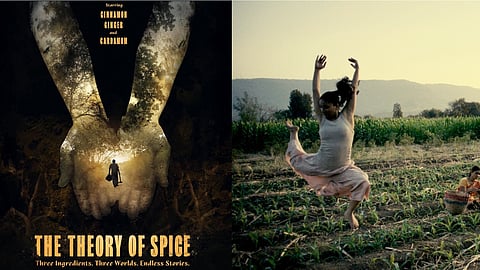
- HOMEGROWN WORLD
- #HGCREATORS
- #HGEXPLORE
- #HGVOICES
- #HGSHOP
- CAREERS
- ABOUT US
- CONTACT US

What is a spice? A spice is any plant substance used for flavouring or adding colour to food. Root, fruit, seed, bark — most of the time, we don’t even realise their presence in our meals, but without them, our food tastes bland, drab, grey — basically boring and uninteresting. Spices are the supporting actors in our food, they don’t necessarily take centre stage, but without them, there’s no show.
And, when we think of spices, what comes to mind? The endless colourful packets in grocery stores? The round spice box almost every Indian household has in its kitchen? Or the transportive power of their aromas — the smell that takes us back to a Sunday morning when Amma is making biryani for lunch: cardamom, cinnamon, cloves.
But what about the people who grow our spices? Their stories and histories are almost always intertwined with those of the spices themselves. To capture and celebrate the communities that make it possible for us to enjoy these aromatic flavour bombs, LA Times Studio and the Yogi Foundation, the non-profit attached to partnered up to create a series of short films — The Theory of Spice. The three films in the series take us on a vivid, rhythmic journey through the making of three spices — cardamom from Guatemala, cinnamon from Sri Lanka, and ginger from India.
Each spice is presented as a character — a protagonist in its own story. Every frame is about them: from the people who grow them, to those who sell them, to those who consume them. They are the heroes of this narrative. The films were shot on-site, in tandem with the communities that cultivate these spices, to show how deeply their lives are intertwined. The people exist for the spice, and the spice exists for the people.
In the third part of the series, titled Ginger and shot in India, the camera takes us from the villages of Shendhre, Satara to the markets of Raviwar Peth, Pune, revealing the many forms and colours ginger takes. With Academy Award, Emmy, and multiple Grammy Award–winning artist Jon Batiste’s voice as the narrator, the film becomes an explosive movement of “image, sound, and poetry” — lyrical, poignant, and playful. “It all begins with Baba — well below Baba, to be precise,” begins Batiste, pointing to the farmer and the ground he walks on, which hosts the mighty ginger. The film particularly highlights the physical labour involved in retrieving this spice, whose history dates all the way back to Confucius in 571 BCE.
The films are also about community resilience in the face of colonisation — particularly evident in Cinnamon, narrated by R&B artist Rizo. The film recalls a time before “they” invaded the land, when Sri Lanka was a paradise, and how its people had to rebuild their society again and again, recovering from the coloniser’s curse.
Ultimately, the films aim to evoke curiosity — about the spice, the process, and the people behind them. In Cardamom, the story becomes one of renewal, as a community rebuilds itself on the back of this tiny seed. Each film ends with a credit sequence that gives the first credit to the spice itself. These films refuse to let spices play second fiddle to the ingredients they usually accompany — the elaichi isn’t lost in the biryani, the ginger isn’t drained out of the tea before it’s served, and the cinnamon isn’t just the final dusting atop a doughnut. Here, they are the main event — the only thing on the menu.
You can watch the short films on the Yogi Foundation website here.
